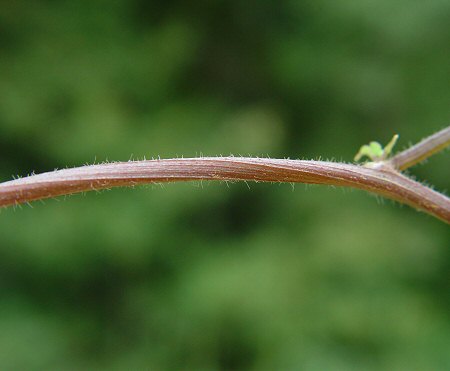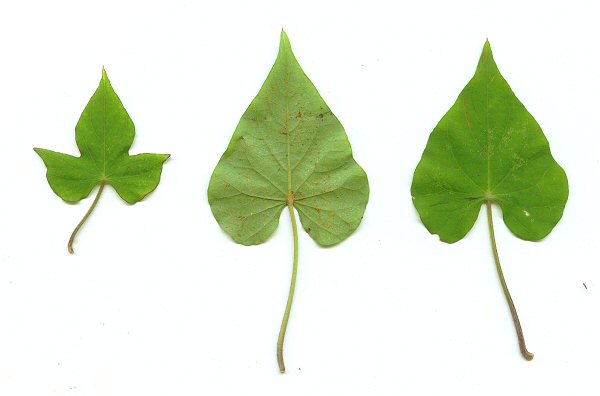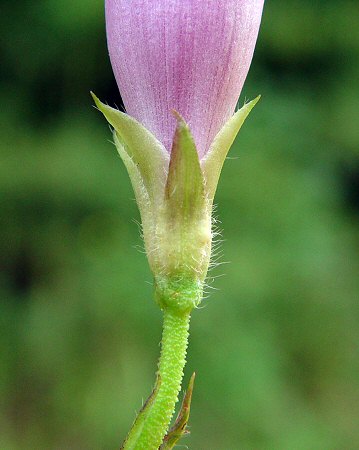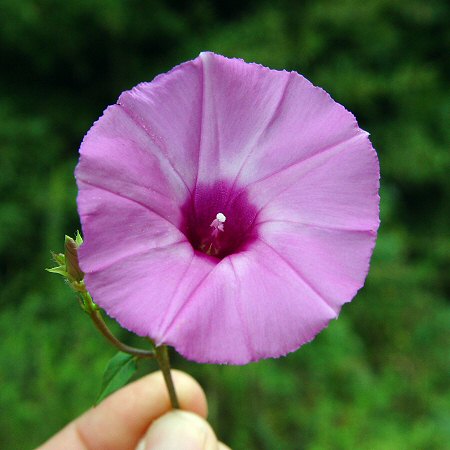Ipomoea cordatotriloba Plant Identification (Flower, Leaf, Care, Uses)

Family – Convolvulaceae
Stems:

Leaves:

Inflorescence:
N/A
Flowers:
 Calyx.
Calyx.

Flowering – March – October.
Habitat – Disturbed sites, waste ground, roadsides, railroads.
Origin – Native to North America.
Other information – This striking yet weedy species can be found mainly in the southern hlaf of Alabama. It is probably more widespread than is recorded.
The plant can be identified by its big lavender flowers (which have a darker purple throat), its cordate leaves, its hairy stems, and its subequal sepals.
A synonym for the species is Ipomoea trichocarpa Ell.
The genus name Ipomoea derives from the Greek “ip(s)” meaning “a worm” and “homo(oio)” meaning “like, resembling” referring to the twining habit of the plants in this genus.
The species epithet cordatotriloba derives from the Latin and Greek roots “cord” meaning “the heart”, “tri” meaning “three” and “lob” meaning “a lobe.” These all refer to the heart-shaped, often three-lobed leaves of the plant.
Alabama Distribution:

Photographs taken off County Road 43, Macon County, AL., 8-31-04.

